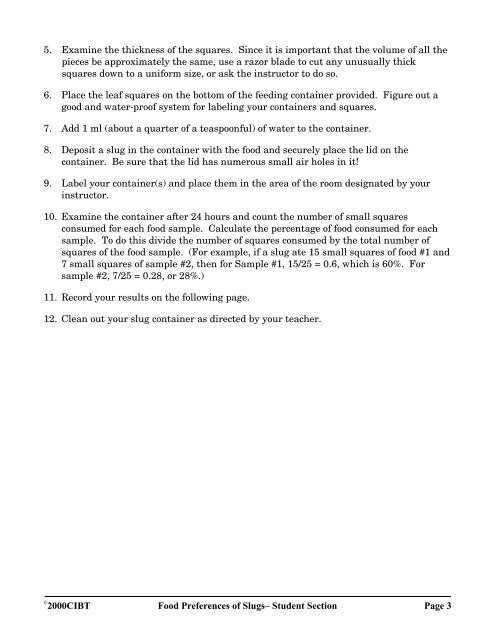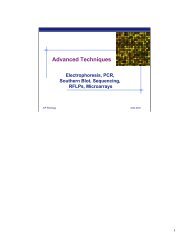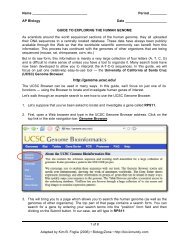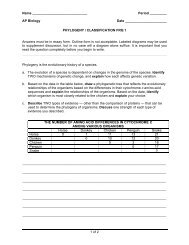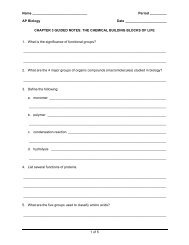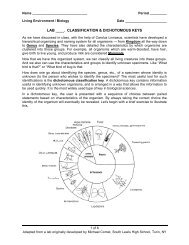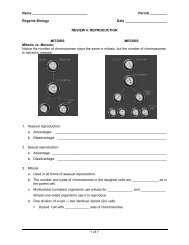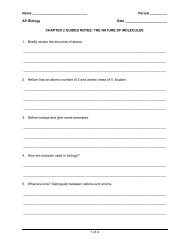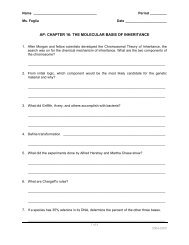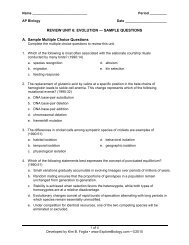Food Preferences of Slugs - Explore Biology
Food Preferences of Slugs - Explore Biology
Food Preferences of Slugs - Explore Biology
You also want an ePaper? Increase the reach of your titles
YUMPU automatically turns print PDFs into web optimized ePapers that Google loves.
5. Examine the thickness <strong>of</strong> the squares. Since it is important that the volume <strong>of</strong> all thepieces be approximately the same, use a razor blade to cut any unusually thicksquares down to a uniform size, or ask the instructor to do so.6. Place the leaf squares on the bottom <strong>of</strong> the feeding container provided. Figure out agood and water-pro<strong>of</strong> system for labeling your containers and squares.7. Add 1 ml (about a quarter <strong>of</strong> a teaspoonful) <strong>of</strong> water to the container.8. Deposit a slug in the container with the food and securely place the lid on thecontainer. Be sure that the lid has numerous small air holes in it!9. Label your container(s) and place them in the area <strong>of</strong> the room designated by yourinstructor.10. Examine the container after 24 hours and count the number <strong>of</strong> small squaresconsumed for each food sample. Calculate the percentage <strong>of</strong> food consumed for eachsample. To do this divide the number <strong>of</strong> squares consumed by the total number <strong>of</strong>squares <strong>of</strong> the food sample. (For example, if a slug ate 15 small squares <strong>of</strong> food #1 and7 small squares <strong>of</strong> sample #2, then for Sample #1, 15/25 = 0.6, which is 60%. Forsample #2, 7/25 = 0.28, or 28%.)11. Record your results on the following page.12. Clean out your slug container as directed by your teacher.©2000CIBT <strong>Food</strong> <strong>Preferences</strong> <strong>of</strong> <strong>Slugs</strong>– Student Section Page 3


